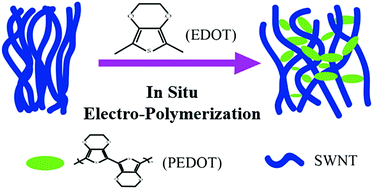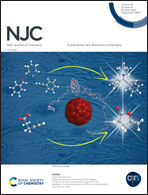In situ construction of a poly-3,4-ethylenedioxythiophene skeleton on carbon nanotubes to improve long-term stability for oxygen reduction reaction†
Abstract
Although carbon nanomaterials show good potential as efficient electrocatalysts for oxygen reduction reaction (ORR), their inferior long-term stability due to their high surface energy resulting in compact restacking limits their practical performance. To overcome this issue, here, we design and construct an anti-agglomerating single-walled carbon nanotube (SWNT) catalyst by using poly-3,4-ethylenedioxythiophene (PEDOT) as an upholder. Physical characteristic results indicate that PEDOT effectively fills in the interweaved zone or adheres to the SWNT surface. Furthermore, S atoms can be doped into the lattice and produce more defects. Electrochemical tests show that SWNTs@PEDOT exhibits similar catalytic activities towards ORR to SWNTs, and both of them can realize a quasi-4e ORR pathway. Within a 32 000 s long-term test, the cathodic current of the SWNTs toward ORR gradually decays to 58% of the initial value; in contrast, SWNTs@PEDOT shows excellent stability with several stages of rise, fall, rise to 105% of the initial current. The excellent stability is due to the stable skeleton caused by PEDOT preventing agglomeration of SWNTs. The equilibrium of swelling and shrinkage of PEDOT even lead to an increase and favorable stability of the current. This suggests a practical method to overcome the weakness of agglomeration, thus enhancing the long-term stability for nano-carbon catalysts.



 Please wait while we load your content...
Please wait while we load your content...